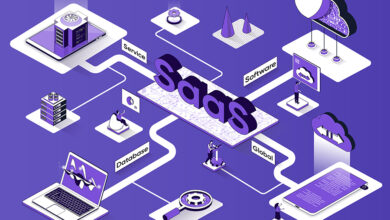Cloud SLA

What Is Service Level Agreement in Cloud Computing?
Cloud SLA
A Service Level Agreement (SLA) establishes the type of cloud computing service you require and demarcates on the performance agreed upon by both parties as deliverables.
It is a crucial aspect of a contract signed between the client and the vendor to assure that the service provided should be of the agreed levels in terms of responsiveness for decided frameworks and applications, accessibility, and measured against a standard set of metrics.
Key Components of a Cloud SLA
 A Service Level Agreement, essentially, protects you from below-par services rendered. It is like a component with specified and decided scales of measurement that allows you to judge the level of service being provided to you. The key components of a Service Level Agreement is to keep an eye out for management and services rendered, but other aspects include the following:
A Service Level Agreement, essentially, protects you from below-par services rendered. It is like a component with specified and decided scales of measurement that allows you to judge the level of service being provided to you. The key components of a Service Level Agreement is to keep an eye out for management and services rendered, but other aspects include the following:
1. System Error
Cloud computing seamlessly takes all networking or IT deliverables and shifts them to the cloud. This may include both hardware and software or only the former. Therefore, a failure in the cloud computing services will render the whole operational setup non-productive. Inclusion of a system or production failure clause is among the first deliverables of a cloud computing service.
2. Quality of Service
Most outsourced applications and technical documents or services should be blindly trusted. The client must keep an eye on the quality of the service provided. It could be in terms of the number of glitches or errors, production efficiency or output, latency, warranties, etc.
3. Security
A critical and important component, every business needs to look out for the levels of security provided in the cloud network. This is a fundamental inclusion in the Service Level Agreement especially for cloud computing services.
Importance of a Cloud SLA
 Service Level Agreements helps establish the kind of service a client wants, benchmarking standards the cloud service provider needs to adhere to. It is a document that includes the responsibilities, criteria, and expectations of both parties – the client and service provider.
Service Level Agreements helps establish the kind of service a client wants, benchmarking standards the cloud service provider needs to adhere to. It is a document that includes the responsibilities, criteria, and expectations of both parties – the client and service provider.
The client can rightfully pull away from the contract binding them to the service provider based on violation of the agreement. In response, the service provider will not be able to cite ignorance to their advantage.
Types of Cloud SLA’s in Cloud Computing
Service-Based
In this agreement, the cloud provider determines parameters of services rendered as guarantees or deliverables. These parameters are specific to a single product or service and applicable equally to all users.
Consumer-Based
A consumer-based agreement is specific to the larger, in case of cloud computing services, to the enterprise. Beyond service-based SLA norms, terms and clauses on a consumer-based SLA are customized and specific to that consumer.
Multi-Level
A multi-level SLA allows the end-user to customize conditions to the services rendered on a scalable grade.
Cloud SLA – Overview
SLA provides a protected benchmark of services rendered by the provider to the client. This benchmark is established by both parties to prevent future discrepancies, or for a smooth resolution to the services.
Cloud Service Level Agreement – Resources
Here is a list of some Cloud Service Level Agreements currently provided by some of the larger Cloud Computing providers, such as Google, Microsoft Azure, and Amazon’s AWS.
- Google Cloud Compute Engine – Compute Engine Service Level Agreement (SLA)
- Google Cloud App Engine– App Engine Service Level Agreement (SLA)
- Google Cloud Storage – Cloud Storage Service Level Agreement (SLA)
- Azure Service Levels – learn about Microsoft’s Azure uptime guarantees and downtime credit policies
- Azure Virtual Machines – SLA for Virtual Machines using Microsoft Azure
- Azure SQL Database – Service Level Agreement for Azure SQL Database
- Amazon AWS Compute – Amazon Compute Service Level Agreement
- Amazon S3 Services – Amazon S3 Service Level Agreement





